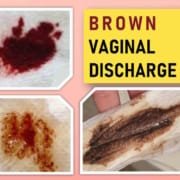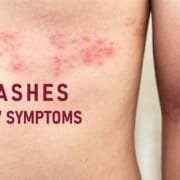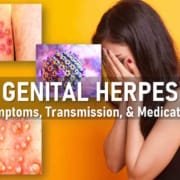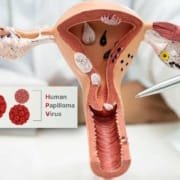Herpes vs Pimples, How to Spot the Difference
What is Herpes?
Herpes is a viral infection caused by the herpes simplex virus (HSV), which comes in two types: HSV-1 and HSV-2. HSV-1 is most commonly associated with cold sores around the mouth, also known as oral herpes. However, it can also cause genital infections through oral-genital contact. HSV-2, on the other hand, is primarily responsible for genital herpes.
Once a person is infected with the herpes virus, it travels to nerve tissues in the body, where it can remain dormant for extended periods. Periodically, the virus can reactivate, leading to outbreaks characterized by the appearance of blisters and sores in the affected area. Genital herpes is highly contagious and can be transmitted to others even when symptoms are not visible. For more information see “Genital Herpes: Symptoms, Pictures, and Medication“.
What are Pimples or Folliculitis?
Pimples, also referred to as folliculitis, are a common skin condition that occurs when hair follicles become inflamed and infected. This can happen due to several factors, such as shaving, friction from tight clothing, or bacterial infection. Pimples typically appear as red, swollen bumps on the skin, often filled with pus. Folliculitis can occur anywhere on the body where hair follicles are present, but it is most commonly found on the face, chest, back, and thighs.
Unlike herpes, which is viral, pimples are usually caused by bacteria, particularly Staphylococcus aureus. The condition is generally not contagious and is often self-limiting, meaning it may resolve on its own without treatment.
Differentiating Between Herpes and Pimples
When healthcare professionals aim to differentiate between two similar-looking medical conditions like herpes and pimples, they rely on two key aspects: the patient’s history and a detailed visual examination.
Patient History. Patient history involves gathering information about the onset and progression of the condition. Key questions include:
- What caused the rash? Understanding potential triggers helps narrow down the diagnosis.
- How soon did the rash appear after exposure? The incubation period, or the time between exposure and the appearance of symptoms, is crucial in differentiating between conditions.
- How have the rash and other symptoms changed over time? Tracking the evolution of the rash provides insights into the nature of the condition.
Visual Examination. A visual examination is the cornerstone of diagnosing skin conditions. During this process, healthcare providers:
- Observe the rash: The appearance, size, and shape of the lesions are carefully noted.
- Identify the location of the rash: The specific area of the body affected can offer clues to the underlying condition.
- Assess any discharge from the lesion: The type and amount of discharge can help distinguish between different skin conditions.
- Evaluate the depth of skin involvement: The extent to which the rash penetrates the skin layers is another critical factor in diagnosis.
In medical practice, approximately 90% of diagnoses for skin conditions are based on a visual examination, with the remaining 10% confirmed through patient history. This highlights the importance of both elements in reaching an accurate diagnosis.
By carefully considering both history and visual cues, healthcare providers can effectively distinguish between herpes and pimples, ensuring appropriate treatment and management.
Herpes vs Pimples: History
What caused the rash?
- Pimples (Folliculitis). Pimples, medically known as folliculitis, are caused by irritation and subsequent infection of hair follicles. This can occur due to shaving, friction from clothing, or other forms of skin irritation. The presence of pimples is often associated with these physical triggers.
- Herpes. Unlike pimples, herpes is a viral infection caused by the herpes simplex virus (HSV). It is typically transmitted through sexual contact with an infected individual, even when there is no visible sore. Herpes lesions appear when the virus is transmitted through skin-to-skin contact during sexual activity.
How soon the symptoms appear?
The incubation period, or the time it takes for symptoms to appear after exposure, is a crucial differentiating factor between herpes and pimples.
- Pimples. The symptoms of pimples usually develop within a few hours to a day after irritation or exposure. This rapid onset is characteristic of folliculitis.
- Herpes. Herpes, on the other hand, has a longer incubation period. Symptoms usually appear 2–4 days after exposure to the virus. This delayed onset is a key indicator that can help distinguish herpes from a pimple.
Evolution of Symptoms
The progression of symptoms can also provide valuable clues in differentiating between herpes and pimples.
- Herpes. Herpes lesions typically follow a distinct pattern, often preceded by flu-like symptoms such as fever, chills, fatigue, and nerve pain. These systemic symptoms signal the onset of a herpes outbreak. The rash itself evolves through several stages. initial redness, followed by blister formation, then sore development, and finally crusting as the sores heal. These stages are often accompanied by significant pain, particularly when the lesions are irritated. Additionally, herpes can cause localized swelling of the groin lymph nodes on the affected side, which is not seen with pimples.
- Pimples. Pimples do not have a prodrome period, meaning they appear without any preceding symptoms. Pimples typically manifest as bumps filled with pus, known as abscesses, which remain in a single stage throughout their development. These bumps may be painful to the touch but do not generally cause systemic symptoms or lymph node enlargement. Pimples usually heal within a few days, although they may leave behind discoloration or scarring.
Herpes vs Pimples: Visual Examination
A visual examination is a critical component of diagnosing skin conditions. By carefully observing the appearance, location, and characteristics of the lesions, healthcare providers can differentiate between herpes and pimples.
Location of Lesions
- Herpes. Herpes lesions primarily appear on the skin bordering mucosal surfaces, which are thinner, moist areas of skin. Common sites include the genitals, mouth, and anus.
- Pimples. In contrast, pimples typically occur around hair follicles. These lesions are most commonly found on thicker skin, such as the thighs, pubic area, and buttocks. You may even notice hair protruding from the lesions.
Extent of Skin Affected
- Herpes. Herpes lesions are usually localized, affecting a small, well-defined area of skin. The rash often appears on one side of the body, corresponding to a specific dermatome (an area of skin supplied by a single spinal nerve).
- Pimples. Pimples tend to affect a larger area of skin and are more widespread. They often appear symmetrically on both sides of the body, covering a broader area.
Appearance of Lesions
- Pimples. Pimple lesions are individual bumps with a red base, separated by normal skin. Each bump is dome-shaped and filled with pus, forming what is commonly known as a whitehead.
- Herpes. Herpes lesions, in contrast, tend to cluster together, sharing a red base. These lesions may vary in shape and are filled with a clear or yellowish fluid. The clustering of herpes sores is a distinctive feature that helps differentiate them from pimples.
Depth of Skin Involvement
- Herpes. Herpes lesions are superficial, affecting only the uppermost layer of the skin. This shallow involvement means that herpes sores usually heal without scarring.
- Pimples. Pimples, however, affect deeper layers of the skin. This deeper involvement can be felt during a physical examination, where the skin may appear swollen or thicker in the area of the lesion.
Discharge from Lesions
- Herpes. Herpes lesions typically produce a minimal, watery discharge when the blisters rupture and turn into sores. This discharge is short-lived.
- Pimples. Pimple lesions, on the other hand, often have a thicker discharge due to the pus they contain. This discharge may persist until the lesion heals.
When to Seek Medical Advice
If you notice a rash or skin lesion that concerns you, it’s important to seek medical advice. This is especially true if the rash is painful, persistent, or accompanied by other symptoms such as fever, chills, or swollen lymph nodes. A healthcare provider can perform a thorough examination and may order tests to confirm the diagnosis.
For herpes, antiviral medications can help reduce the severity and duration of outbreaks, as well as lower the risk of transmission to others. For pimples, treatments may include topical or oral antibiotics, antiseptic washes, and other skincare products to reduce inflammation and prevent infection.
Conclusion
Understanding the differences between herpes and pimples can help you identify these conditions and seek appropriate care. While both conditions can cause discomfort, herpes is a viral infection that requires specific antiviral treatment, while pimples are typically managed with good skincare practices and, in some cases, antibiotics.
If you’re ever in doubt about a skin lesion, it’s always best to consult with a healthcare provider. Early diagnosis and treatment can help manage symptoms effectively and prevent complications.










